Sorry for the following mess, the formatting tools on itch are a little unwieldy. Working on making this look a little prettier, but also wanted a non-PDF version of the rules somewhere
Thanks all <3
Faery's Gambol Standard Ruleset
Pregame: Presenting Runes
In order to play Faery’s Gambol, you and your opponent need your own set of Rune Cards, which need to be made up of at least the 12 primary Faery Runes. Each player also needs a Faery Card Deck made up of at least 15 Faery Cards.
The 12 Primary Faery Runes. Rune Cards are used to keep track of a player’s “score.”
Some players may have more than the 12 Primary Rune Cards in their deck. To ensure the game is still playable when this happens, Rune Matching is required, as explained in the Advanced Rules section.
If you don’t have either Faery Cards or Rune Cards, free Cards and Decks and instructions on How to Create Faery Cards can be found at: http://Mathandr.itch.io/Gambol
It is customary to work with your opponent before playing to create a Faery Card together that goes to the victor at the end of the game. This is entirely optional but very much encouraged.
The Game Begins
Once each player’s Runes are set up, both players draw 4 Faery Cards from their deck into their hand and decide which player goes first.
A round consists of each player taking a turn to play a Card in front of them and drawing back up to 4 Cards in their hand.
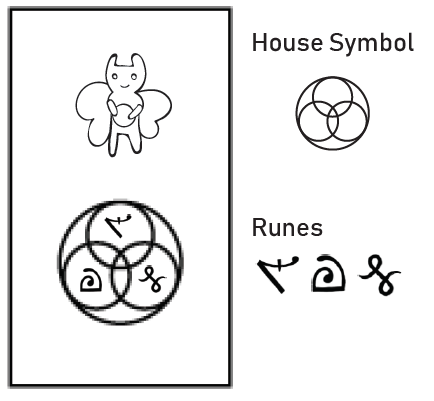 | Each Faery Card has a drawing, a House Symbol, and a number of Runes drawn around it.
A Faery Card’s House Symbol determines if Runes are “sent Forward,” “Collected,” or otherwise as explained in the House Rules section. The orientation of the Runes on Faery Cards to each player is important. Unless specified by an individual House’s rules, Faery Cards must be played right side up. |
Terms of Victory
The goal of Faery’s Gambol is to be the first to have any 5 unique Collected Runes on Faery Cards in front of you for a full round. If you begin your turn with 5 Collected Runes not counting duplicates, you win!
Collecting Runes
Players “collect” runes as soon as they play Faery Cards with any number of Collected Runes on them. Once a Rune is collected signify that you have it with your Rune Cards by making a stack of Collected Runes, “tapping” Rune Cards, placing tokens on Collected Runes, or any other way you want. You can lose Runes just as easily, so try to keep it simple.
Banishing Opponents
A player can remove an opponent’s Faery Card from the playing field during their turn by playing a new Faery Card with matching Forward Runes. The example above can be banished by anything with a Rune in its House’s Forward Rune position(s). When this happens, the banished card is discarded, and whatever “Collected Runes” it provided are removed from their owner’s collection.
Opponent cards can only be banished using at least one Forward Rune from a newly played Faery Card. Forward Runes that have been played in previous rounds can only be used to banish opponent cards if used in combination with a Forward Rune from a newly played Faery Card. Individual Runes can only be used once per round against one other Rune. (This means Bloomhearth House Cards
can only banish 1 card when played, while Hobgob House Cards can banish up to 2).
House Rules
Each House has slightly different rules to playing their cards that can affect the game in a variety of ways. There are three major Houses included in most Faery Card decks that I will detail in this guide; the Bloomhearth House, the Hobgob House, and the Silent Rune House. If a player has additional Houses included in their deck, it should be discussed and agreed upon before a game if those houses can be used.
The Bloomhearth House
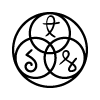 | When a Bloomhearth card is played, one rune should be pointing towards the player’s opponent, this is the House’s Forward Rune. Two runes should be pointing towards the card’s owner, these are the House’s Collected Runes. |
The Hobgob House
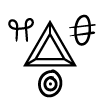 | Hobgob House cards are the reverse of Bloomhearth House cards. When a Hobgob card is played the player only collects one rune, but the card has 2 Forward Runes. Forward Runes are used when banishing or defending from being banished. The more Forward Runes a card has, the more difficult it is to banish. |
The Third House: the Silent Rune
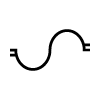 | The Silent Rune House Symbol is a sideways S, and 2 Runes are added in the nooks on either side. They are a secret organization of faery try to keep the Faery World secret and safe from those who would wish it harm. They are considered the “turncoat” House because of their ability to be played in reverse. Bloomhearth and Hobgob Houses can be described as reverses of each other, but Silent Rune House cards work a little differently. |
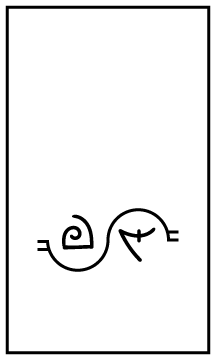 | The only way to defeat a Silent Rune House card is with another Silent Rune House card. Silent Rune Cards only have one Collected Rune and one Forward Rune. Silent Rune House Cards can still be used to banish non-Silent Rune House Cards with its Forward Rune. Finally, Silent Rune House Cards can be played in reverse, meaning you can swap Forward and Collected Runes depending on what you need. |
Advanced Rules
Once you get used to the Standard Ruleset, other rules and Houses can be added to shake things up.
The real game has literally thousands of rules and regional variations, and I swear I’ve seen some
rules made up on the spot. “Ygh Fae can’t be banished from wooden surfaces!” “That Rune doesn’t
work after sundown!” “A Binglydum can’t be on the same team as a Gukackle!”
Quirks!
One of the most common variations people love to include on their Faery Cards are Quirks. Quirks
are rules or actions that are written on cards that can change how they are played in specific
circumstances. Both players should agree to use Quirks or not before playing.
Quirks should not;
~ be able to automatically win games,
~ make any card invincible/unbanishable,
~ banish or otherwise hamper opponent cards based on Runes alone.
Being vague is encouraged! In the Faery World, the discussion of what some Quirks actually mean is
half of the fun.
“Glimmer fae love the morning after a damp night, when all the grass glistens in the rising sun. On
these mornings, they become twice as difficult to chase away.”
“Sylguia, the hopeless romantic, waits for their perfect match. If, one fated day, Sylguia is played
against a card with exactly matching Runes, the opponent’s fae is “charmed” and joins Sylguia’s
side.”
Just like everything else, Quirks should be fun! If a Quirk makes someone laugh, it should probably
work!
Matching Runes
If a player has more than the 12 Primary Faery Runes in their deck and their opponent doesn’t have
matching extra Runes, the player must stack each of their extra Rune Cards on top of one of the 12
Primary Faery Rune Cards, distributed as evenly as possible. These are called Stacked Runes, and
each Stacked Rune acts like the Primary Faery Rune they are on top of when played.
There are 2 additional Rune Cards in this deck that become Stacked Runes. In a game with this setup,
is the same as and is the same as


